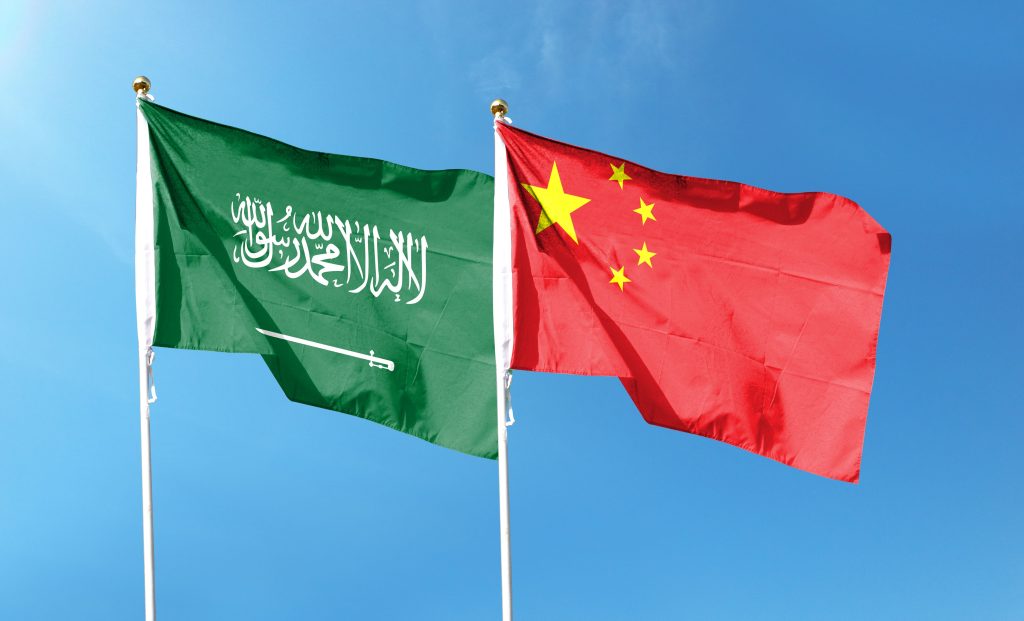China has maintained its position as Saudi Arabia’s primary trading partner in September, continuing to dominate both imports and exports. According to the General Authority of Statistics, the trade surplus with China reached SR6.67 billion ($1.78 billion), marking a 257 percent surge compared to August. Saudi Arabia experienced a 34 percent growth rate in exports to China during this period, totaling SR18.99 billion. The increase in exports is mainly attributed to oil shipments, accompanied by non-oil products such as chemical components, plastic, and rubber. China’s share of Saudi Arabia’s exports also rose from 14 percent in August to 18 percent in September.
The recent signing of a local currency swap agreement valued at 50 billion yuan ($6.93 billion) between the People’s Bank of China and the Saudi Central Bank reflects the strengthening bilateral relations between the two countries. This three-year agreement aims to enhance financial cooperation, increase the use of local currencies, and boost trade and investment between Riyadh and Beijing. Saudi Arabia and China have been diversifying their relationship beyond oil-focused ties, including collaboration in the fields of security and technology.
Saudi Aramco, the state oil giant, has also been expanding its investment in China. In March, it announced two significant deals aimed at strengthening its position as China’s primary crude provider. These deals, which followed Chinese President Xi Jinping’s visit to Saudi Arabia in December, included advocating for oil trade in yuan, potentially reducing the dominance of the US dollar. Japan, South Korea, and India trail China as the primary destinations for Saudi Arabia’s exports, while the UAE stands as the leading non-oil export destination.
Saudi Arabia achieved a trade balance of SR43.74 billion in September, marking a 27 percent increase from the previous month and reaching the highest value in nearly five months. This increase can be attributed to a 14 percent decrease in merchandise imports, which hit a five-month low at SR60.09 billion. Non-oil exports saw a 14 percent decrease, totaling SR16.39 billion. However, this decline was almost balanced by a 7 percent rise in oil shipments, accounting for 80.1 percent of overall exports and reaching SR83.12 billion in September.
Mineral products played a significant role in Saudi Arabia’s exports, constituting an 80 percent share and reaching a value of SR83.25 billion. Japan, South Korea, and India follow China as the primary destinations for the Kingdom’s exports. The UAE and the US secured the fifth and sixth positions. In terms of imports, mechanical and electronic devices, along with transport vehicles, accounted for 40 percent of total imports in September. Imports from China amounted to SR12.33 billion, constituting 21 percent of Saudi Arabia’s total imports and mainly consisting of industrial machinery and transport equipment.
Saudi Arabia primarily imports mechanical, electrical, and transport equipment from China, the US, India, Germany, and Japan. The majority of the Kingdom’s imports of pearls, jewelry, base metals, textiles, and mineral products come from various countries such as the UAE, Switzerland, and Egypt. The ratio of non-oil exports to imports in Saudi Arabia stood at 34.5 percent in September. While a non-oil trade surplus existed with the UAE and Kuwait, there was a trade deficit with Bahrain, Oman, and Qatar. The trade deficit between Saudi Arabia and the Gulf Cooperation Council countries contracted to SR388.5 million in September 2023, a significant decrease from SR1.96 billion in the same month last year.
Looking towards future trade prospects, Saudi Arabia has been invited, along with other nations, to join the BRICS bloc (Britain, Russia, India, China, and South Africa) as a full member starting January 2024. The invitation aims to strengthen economic recovery, address supply chain disruptions, and counter Western influence and the dominance of the US dollar. Saudi Arabia is considering the invitation and will conduct a thorough evaluation before potential membership by January 1.
